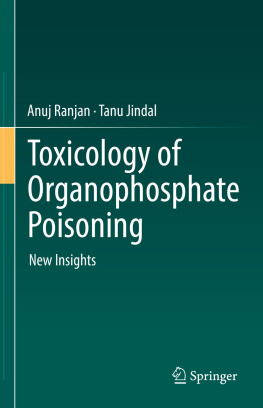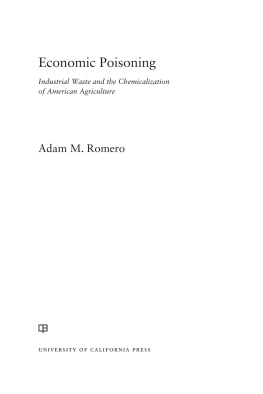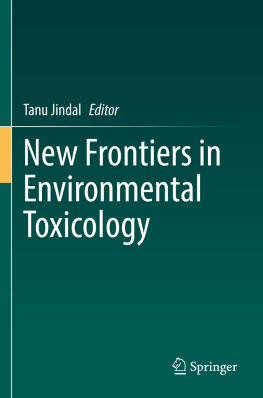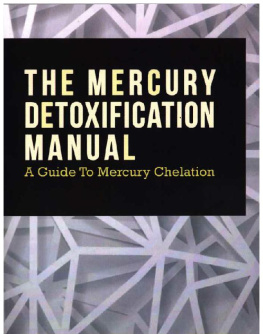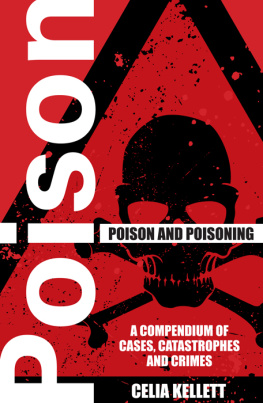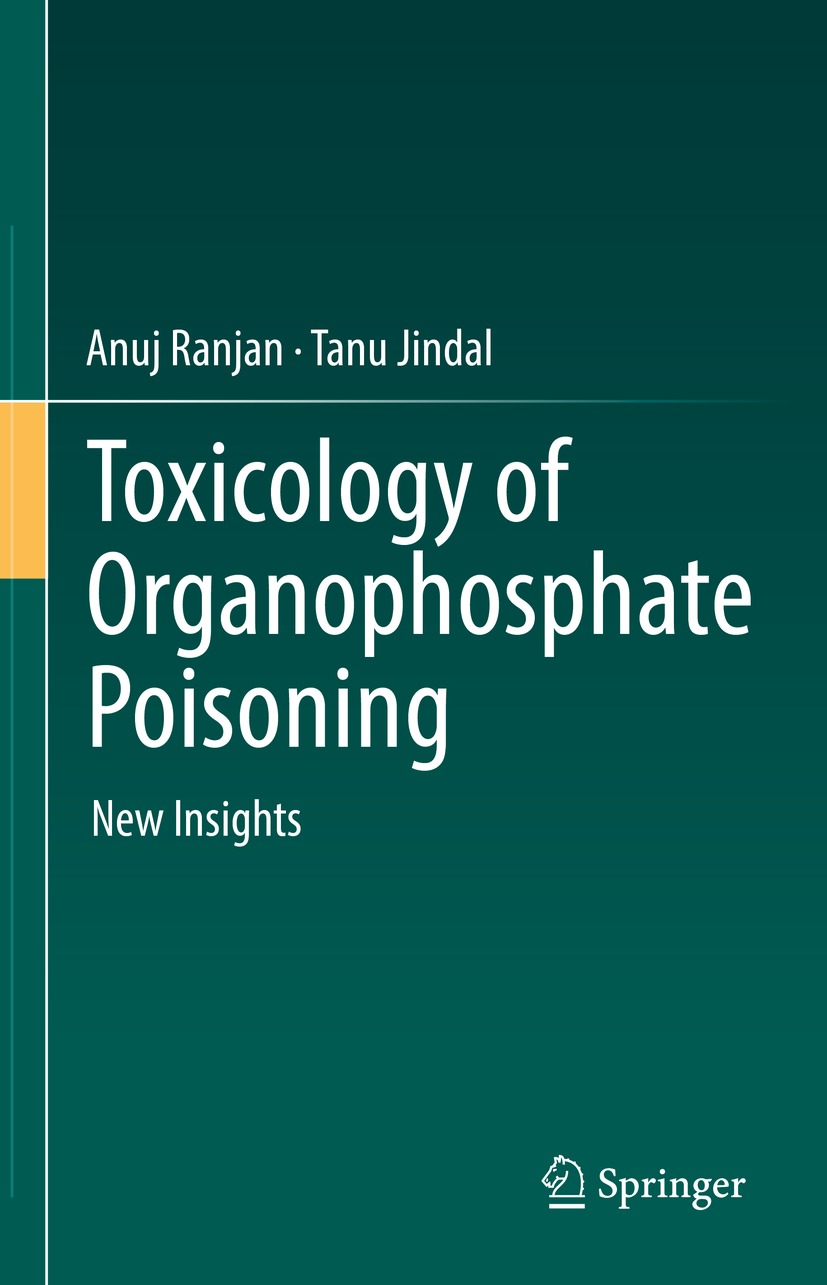Anuj Ranjan and Tanu Jindal
Toxicology of Organophosphate Poisoning
New Insights
1st ed. 2022

Logo of the publisher
Anuj Ranjan
Amity Institute of Environmental Toxicology, Safety and Management, Amity University, Noida, Uttar Pradesh, India
Tanu Jindal
Amity Institute of Environmental Toxicology, Safety and Management, Amity University, Noida, Uttar Pradesh, India
ISBN 978-3-030-79127-8 e-ISBN 978-3-030-79128-5
https://doi.org/10.1007/978-3-030-79128-5
The Editor(s) (if applicable) and The Author(s), under exclusive license to Springer Nature Switzerland AG 2022
This work is subject to copyright. All rights are solely and exclusively licensed by the Publisher, whether the whole or part of the material is concerned, specifically the rights of translation, reprinting, reuse of illustrations, recitation, broadcasting, reproduction on microfilms or in any other physical way, and transmission or information storage and retrieval, electronic adaptation, computer software, or by similar or dissimilar methodology now known or hereafter developed.
The use of general descriptive names, registered names, trademarks, service marks, etc. in this publication does not imply, even in the absence of a specific statement, that such names are exempt from the relevant protective laws and regulations and therefore free for general use.
The publisher, the authors and the editors are safe to assume that the advice and information in this book are believed to be true and accurate at the date of publication. Neither the publisher nor the authors or the editors give a warranty, expressed or implied, with respect to the material contained herein or for any errors or omissions that may have been made. The publisher remains neutral with regard to jurisdictional claims in published maps and institutional affiliations.
This Springer imprint is published by the registered company Springer Nature Switzerland AG
The registered company address is: Gewerbestrasse 11, 6330 Cham, Switzerland
Preface
Modern agriculture is highly dependent on the use of synthetic pesticides. It is an effective and inexpensive way to boost the yield of agriculture produces with respect to quality and quantity. The worldwide use of pesticides has reached up to 2 million tons annually. There has been a steep increase in the use of pesticides by developing countries. In Asia alone, it has reached up to 20% of worldwide pesticide use. Few significant increases in the import of pesticides, for example, 61% in Cambodia and 55% in Laos, show the dependency in the use of pesticides in the future as well as an alarming situation. India is the second-most populous country in the world ranking 12th in the manufacturing of pesticides with an annual production of 90,000 tons. Concerning the environment, owing to persistent nature and longer half-lives, several organochlorine pesticides have been banned in the past few years.
Organophosphates (OP), a group of chemicals with cholinesterase/acetylcholinesterase (AChE) inhibitory properties, are being used over the past 60 years for protecting crops, and they make almost 60% of the total chemical pesticide consumption of the world. Such heavy use of OP makes the non-target organisms susceptible to inevitable exposures. Its mode of action is ubiquitous across organisms that have a well-established nervous system. Hence, uncontrolled and unmonitored use of OP caused its presence in various abiotic and biotic components. They have also been used as nerve agents in chemical warfare. Its industrial application as flame retardant and plasticizers is popular. Cholinesterases are the prime target of OP, and hence its acute toxicity is lethal to every organism including humans. Organophosphates reach humans by various routes of exposure, and they also induce chronic toxicity leading to neuropathy, Alzheimers disease, and Parkinsons disease. Organophosphates are irreversible inhibitors of AChE as they cause phosphorylation of enzyme, and with time AChE ages and then reactivation becomes nearly impossible.
Organophosphates are also responsible for ending the lives of millions of people across the world due to intentional poisoning. Acute poisoning of OP irreversibly inhibits the acetylcholinesterase that causes the accumulation of the neurotransmitter acetylcholine in the synaptic gap resulting in hyperstimulation of nerves. The neurotoxicity caused by hyperstimulation leads to failure of nervous systems, paralysis, respiratory failure, and death if not treated on time. Intentional poisoning is very common among underdeveloped and developing countries, and it has affected millions of lives across the globe.
Innovation in pharmacological intervention and novel treatment approaches such as the use of bioscavengers is the future of the management of OP poisoning. But it requires adequate medical infrastructure, stringent policy frameworks, and community supports.
The book titled Toxicology of Organophosphate Poisoning: New Insights provides adequate information about the physicochemical properties of OP, methods of synthesis, application, and its presence in biotic and abiotic components. This book also covers detailed toxicological characteristics of OP concerning humans and the mechanistic aspect of inhibition of AChE targets and discusses the advances in pharmacological intervention and the management of OP poisoning in detail. We hope that this book could be of great use for clinicians, scientists, teachers, scholars, technicians, students, and pharmaceutical industries as well.
Anuj Ranjan
Tanu Jindal
Noida, Uttar Pradesh, India
About the Book
Organophosphate (OP) poisoning is very common among several developed and underdeveloped countries. Inhibition of acetylcholinesterase is the main toxicological aspect of OP by which it exerts its toxic effect on insects and other nontarget organisms. Most of the intentional poisoning-related hospitalization is mainly due to OP, and millions of people lost their lives. Therefore, OP poisoning remains one of the major public health issues. Adequate medical facilities in rural areas where such incidences have been reported most frequently are the primary requirement toward the management of OP poisoning. Policy framework, community engagements, and awareness also play key roles in the management and reducing the number of incidences.
The book titled Toxicology of Organophosphate Poisoning: New Insights covers the key areas in the OP poisoning in six chapters. The first chapter, Overview of Organophosphate Compounds, of this book covers the general and physicochemical properties of the OP, synthesis, application, and its presence in the various biotic and abiotic components. The second chapter, Toxicology of Organophosphate Poisoning in Humans, deals with the pathophysiology and clinical manifestation of OP poisoning. This chapter also includes receptor-specific manifestation, duration-based manifestation, and organ-specific manifestations of OP poisoning. The toxicokinetics of OP and methods of detection in humans have also been discussed briefly. The third chapter, Enzymatic Targets of Organophosphates, discusses the enzymatic targets of the OP pesticides. Acetylcholinesterase inhibition by OP and its mechanism, kinetics of inhibition, the aging process of AChE, and its reactivation have also been discussed in detail. This chapter also discusses the reactivation strategy of aged AChE and other important targets of the OP that significantly affect the health of humans. Chapter four, Managing and Modulation of Cholinesterase, covers the important aspect of managing the AChE as it is a key enzyme that is affected by acute OP poisoning. Rescue of phosphorylation by various means such as reactivation by oximes and bioscavengers are discussed in detail. A few trending nanotechnological approaches to rescuing the AChE are also discussed along with the realkylation process. The realkylation process is useful in rescuing the aged AChE enzymes. Chapter 5, Pharmacological Interventions for OP Poisoning, highlights the key pharmacological interventions in case of acute OP poisoning. Usually, oximes are considered potent reactivators of AChE, so this chapter discusses in detail highlighting their use in the treatment of OP poisoning. Other useful pharmaceutical interventions such as atropine, benzodiazepines, magnesium sulfate, and sodium bicarbonate are discussed briefly. Chapter 6, Management of Human Organophosphate Poisoning includes the initial clinical assessment, management, life support procedures such as resuscitation and airway management, decontamination through gastric lavage, and hemodialysis. The role of the policy framework and community engagement has also been discussed.

